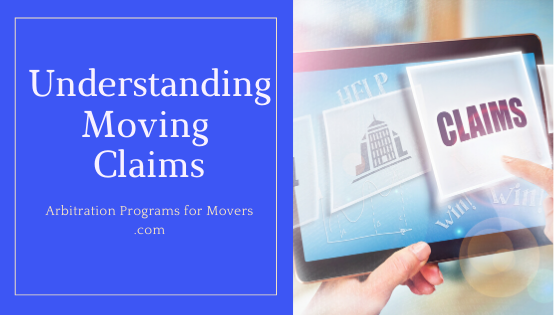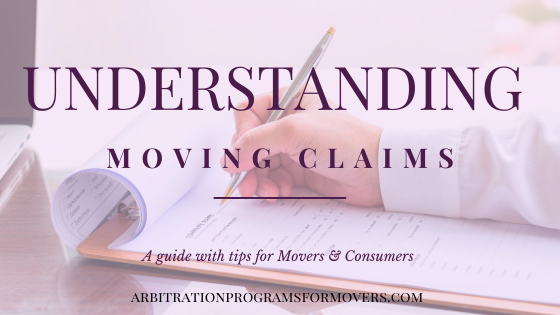Understanding Moving Claims & Liability
Interstate moving companies are liable under US law for all damages and losses. These situations take place when shipments get transported. This is why the Bill of Lading is so important but is must be documented also with a moving claim form. It helps companies understand how their services should operate because an angry customer normally thinks can I sue moving company for damages.
There is a governance that oversees cases of company liability which must be documented by a movers damage claim form.
Buy Arbitration $189It’s called moving company claim form by the Surface Transportation Board’s Released Rates Order. They are a great resource for your company to contact for more information on what is required. Do so if you ever get confused about claims and liability, well knowing how to process your claims can help with your fmcsa scores and not doing it correctly is a tariff violation. Better yet, you can contact our company and we will reach out to them on your behalf but sometimes it benefits our clients to receive and read the Released Rates Order form. This a moving company release form that will close out the claim file when finished.
Our company can send you a copy or you can find it on the website of the Surface Transportation Board.
Also, moving companies have a right to sell their customers third-party liability insurance. If you would like to learn more about this, please call or email us today.

Introduction to the Two Levels of Liability
US law says every moving company must hold liability for transported household items. There are two levels of liability when it comes to interstate moving. There is:
- Full (Replacement) Value Protection
- Full (Replacement) Value Protection (Released Value)
In order for your company to achieve success, it must have a full understanding of both levels. This is so your staff is aware of the amount of protection they can give and also the charges they can apply.
Full (Replacement) Value Protection
When it comes to a customer’s options, this one is the most comprehensive by far. The purpose, of course, is to protect the customer’s household goods. But the customer should know that this protection will make total charge increase. That level of protection should get included in the initial estimate. That is when a company provides all information to the prospective customer. Say the customer agrees to the terms. Next, his or her items get transported with the terms of this liability in place. The exception is when the customer decides to waive Full Value Protection.
Buy Arbitration $189Let’s say the customer has Full Value Protection.
And an item gets lost, damaged, or destroyed. Subject to exceptions in the moving tariff, the moving company has two options:
- Replace the item with a similar one of equal value. Or, pay the customer the total cost of replacement.
- Repair or restore the item. This means the items has to be in the same condition that it was in before the error took place. Or, pay the customer the total cost of the repairs.
There may be certain deductible levels that could influence the total cost.
This varies on a case-by-case basis. Some moving companies offer higher lowest-amount values than others. Also, the customer can state a higher value for a shipment. But that requires the cost to increase. What is the lowest level for figuring out a shipment’s Full Value Protection? Six cents per pound multiplied by the shipment’s weight. Make sure all charges related to Full Value Protection get stated on the moving tariff.
Full (Replacement) Value Protection: Released Value
What does Released Value mean? It’s defined as Minimal protection. It is the best way for a customer to ensure that they will not receive extra charges. This involves the interstate moving company holding liability. But that liability does not cover more than 60 cents a pound, per item insurance. A customer, should of course, put a lot of though into what decision he or she should make. Here is an example of Released Value. Say a $1,000 television gets destroyed during the move. The moving company would not be liable for more than $40.00. Why? Because sixty cents x 40 pounds equals $40.00.
Buy Arbitration $189
What is a moving claim?
A moving claim is an insurance claim submitted by a consumer who has moved their residence. The mover’s policy covers any damage caused to furniture, clothing, or other items while they are in transit during the move. It also typically includes coverage for lost or stolen items that have been packed and loaded onto the moving truck.
Moving claims are filed with the homeowner’s insurance company and must be approved for payment before any reimbursement is issued.
To ensure prompt payment, it is important for homeowners to provide all required documentation when filing a claim. This can include photographs of damaged property, receipts for rental trucks or packing materials, weight tickets from movers, and more. Depending on the terms and conditions of your policies, you may be eligible for various types
Why should i get an arbitration program?
Arbitration programs are an important consideration for businesses of all sizes. The benefits of enrolling in an arbitration program include access to experienced, impartial and cost-effective dispute resolution services. In addition, joining an arbitration program helps to ensure that you receive fair, consistent and timely decisions on disputes without the expense or lengthy delays associated with lawsuits. An arbitration program can also provide a confidential platform for resolving disputes in a private setting and allows parties to control their own outcomes. Ultimately, joining an arbitration program is a smart investment that can save time, money and stress when it comes to conflict resolution.
What is an arbitration program?
An arbitration program is a type of alternative dispute resolution, or ADR, for resolving disputes outside of court. It involves the use of an impartial third party to hear both sides of a dispute and render a binding decision. Both parties must agree in advance to be bound by the arbitrator’s ruling. This form of dispute resolution typically results in faster resolution than traditional litigation and can often help to preserve relationships between the disputing parties.
An arbitration program may also offer cost savings when compared to court proceedings.
The rules governing the arbitration process are typically outlined in an agreement between the parties before any hearings begin. The goal is for all involved parties to feel that justice was served without relying on costly court proceedings or lengthy trials.
Get Our arbitration program today!
Our arbitration program offers a convenient and cost-effective way to resolve disputes between two parties quickly and efficiently. With the help of experienced arbitrators, each party is able to present their case in an unbiased forum and can have confidence that their rights will be protected. Get our arbitration program today and experience dispute resolution without ever having to step foot into a courtroom.

